| Revista Umělec 2003/3 >> WAS IST KUNST (interview with Raša Todosijević) | Lista de todas las ediciones | ||||||||||||
|
|||||||||||||
WAS IST KUNST (interview with Raša Todosijević)Revista Umělec 2003/301.03.2003 Zoran Erić | q&a | en cs |
|||||||||||||
|
"In the Serbian art scene there is no one quite like Raša Todosijević. Since the 1970s he has worked as an autonomous being, in spite of all the indifference, malediction and even success he has received. His critical position towards nationalism and violence during the dissolution of Yugoslavia only confirmed his reputation. Serbian theoretician Zoran Erić questioned him about the past and present situation in Serbian and Balkan art, but he also uncovered the deeper levels of Todosijević’s artistic philosophy.
Let’s begin by discussing the context in which the first performances happened in Belgrade at the SKC Gallery, where a group of artists was formed that included Raša Todosijević, Marina Abramović, Zoran Popović, Neša Paripović, Gergelj Urkom and Era Milivojević. When I speak about the performances from the early 1970s, I always emphasize that this longstanding artistic form didn’t come about just like that. Performance, or that from which it began, in the beginning didn’t have a kind of fixed structure; in the first days there were little motions we used to call “actions” or “events.” What’s strange, and what’s very important and also very difficult to describe is that those little motions were different from what was known as Happening, Neo-Dada or Fluxus. Those little and short-time events, often done in a private space and usually far from the artistic public, were the first steps towards future performances. Also, it’s important to stress that for artists coming from the painting tradition, the use of body, motions, was much more difficult than for people who came from the traditions of dance or theatre, where the time-space component was in the nature of their expression. People from the visual arts on the one side, and people from theater, music and dance on the other could learn many things from each other. It was apparent that the new forms couldn’t be presented in those traditional places where you have the presentation of music, dance or plays. Due to these circumstances, unconventional galleries became publicly accepted cultural spaces. Besides static artistic works, avant-garde musicians or people from radical theater could present their new projects in these places, in which they abandoned tied-down forms of expression. The mutation of different experiences, indeed of different media, is the earliest phase of performance. I’d also like to emphasize that that was the time when galleries became places where theoretical debates, lectures on art and so on began to take place. The first performances, in the true meaning of the word, when we talk about the group of artists around the Student Cultural Center in Belgrade, were realized during the Edinburgh Festival in 1973. For our show, we got a big gym, so we decided that all of us together, and at the same time, would make our own performances. Viewers could go from one artist to the next and check out what was happening. The participants were: Marina Abramović, Gergelj Urkom, Zoran Popović with Sally Holman, and me with Marinela Koželj and a goldfish. That event was something new, even for Scotland. Marina did the performance with the knives, which she later called Ritam 0. Gera (Urkom) and tried to rebuild broken chairs; I did a performance with body lubrication and goldfish, and Zoran Popović hung an 8mm video-camera from a string so that it would move freely and then he hid behind Sally Holman so that the camera wouldn’t film him. These were the first works which we could really call performances. Terms like “event” or “performance” came from the English language, but it’s important that they kept distance from the “happening.” The only one of us who did happenings was Era [Milivojević]; he kept the fluid, untidy structure of the happening with the usage of different materials, unpredictable practices. Two years passed between those first little motions, actions, and the arrival of clearer forms. Those aleatoric motions necessarily demanded some kind of documentation. It’s natural that photos came first, then the 8mm camera and then video. Of course, that wasn’t classical photography anymore, and video never replaced the 16mm camera. What was the climate like in Belgrade then? Was there anything special compared to the other artistic centers in the former Yugoslavia? If we’re going to make certain analogies, it was evident that in Ljubljana the projects and actions of the OHO group were basically directed towards nature. Though among them was also the American artist David Naz, who brought some of the ideas of American Land Art. On the contrary, in Zagreb there were the traditions of EXAT, New Tendencies and Gorgona. The first actions of the younger Zagreb artists were directed towards intervention in city spaces with the use of new materials like neon, plastics, polyester and so on. In Belgrade, we didn’t have the kinds of allies we needed to make some kind of spiritual link. There was Zenit, Micić… but that was long ago. How close to you was the heritage of the historical avant-garde? How much do you regard it as a tradition to which you can relate? It’s true that we regarded Micić, Zenit and others as a part of this tradition, but we took it as an historical aspect, in the same way we thought of the European Dadaists like Duchamp, Malevič, Schwitters, and so on. All this existed far from the zone of our actual situation, so the prewar Yugoslav avant-garde existed in our minds only as history. I don’t think that one could say that we got our inspiration from ambiguous documents about dadaistic matinees or from Zenit’s typography. Our situation was totally different, and it first came to prominence in EGO and then the works in a closed space, indoors. The most important was the strengthening of EGO, the body and the public, everything happened in relation to this; so it wasn’t nature, or the open city space, but the search for a new and, at that time, pretty strange individuality. How did you treat your own body? In some performances you went to the limits of endurance. Yes, there was the performance Pijenje vode (Drinking Water) which I did in 1974 in the Student Cultural Center (SKC) in Belgrade. I was completely aware that I was using my body as a material. In the first actions Krst (The Cross), Znak (The Sign) or Skulptura (The Sculpture) from 1972 I literally used my body as a material. Performance as a “time-based art,” a long-living art, as you’ve said, had links with dance, theater. How important to you was the document, which outlived the performance as something material? Then people were also speaking about “the dematerialization of the artistic object.” Of course we were thinking about documenting those things. However, at that time we were so poor that it was a dream to make, say, a simple series of black and white photos; usually they were tattered black and white pictures, done in a bad, negligent way, but pretty dramatic. In spite of everything, it was relevant to have some materials; photos were important, but they lacked the feeling of personal documents, because they were taken by our friends. Zoran Popović had a film camera, an 8mm, which he bought in London, but he used it more for his films than to document work by his colleagues. Only in 1973, respectively in 1974, Prekrasnov and Jack Moore appeared, so we could record our video works at their place. At that moment everything was somehow confusing, video as well as photos, but soon something came out called artists’ photography or photography as an artistic work. When did you begin to use video in your work? Other people’s recordings of my performances I didn’t consider artistic works, but only simple documents. The first performance made for video was Was ist Kunst Patricia Hennings?, then Umetnost i Memorija (Art and Memory) and Sećanje na umetnost Raše Todosijevića (Remembering the Art of Raša Todosijević). Was ist Kunst Patricia Hennings? was filmed in 1976 in Istra, in the village called Brdo, which is a nearly abandoned small place where only older and mentally handicapped people lived. We were invited by Ursula Klinsinger, and I said that for the video performance I’d like to invite her housemaid, who was a slightly retarded person. I wanted the camera to be directed at her and me to ask her the question: “Was ist Kunst?” But Ursula said that that could traumatize the young girl, so instead of her Patricia Hennings came, who looked like Little Buddha. That was my first work with video or video performance. This says a lot about your position towards the media. As you’ve worked with a few different media, they were always only a device. Only the question “Was ist Kunst?”, especially declared in a such an aggressive way in German, means so much. Maybe nobody has asked this question in this way in our environs. Not in some artist’s romantic vision or interpretation of what art is, but in a way where the artist reflects his or her own art and position in art and in the art system. So maybe your video performance took the first steps. That thing in Brdo was a very unusual situation. We went to Ursula’s on some kind of picnic to an almost abandoned place, which looked like a village of ghosts. Everything was so contradictory. We came to this de-contextual space to make artwork. Art belongs to the big cities, where ideas are exchanged. For this reason, I immediately thought of the mentally retarded girl. If one looks from today’s perspective, from the perspective of the past ten years, that video has a very critical connotation, which it didn’t have then. I recently saw the video in Kassel after twenty years, and with the experience of those past years, and with all the terrible things that happened here, it now opens the possibility of a new political interpretation. Something similar happened to me in 1973. That year I found a map of Yugoslavia that was used in school during geography classes. I painted the map black. It was more of a gesture close to Klein; it had the feeling of Neo-Dada, Fluxus or Nouveau Réalisme. Then I sold the map for a little money to an art historian who has no idea where it is today. I recently did this painting of the Yugoslav map again, and I wrote 1973-2003. And now this new version was interpreted as though it had some kind of political connotation, which isn’t true at all — not even in some dragged-out reading of the artist’s anticipation of future miseries. So after all those events one’s perspective at looking at it has changed. I want only to illustrate the similarity between this black map of Yugoslavia and the piece Was ist Kunst Patricia Hennings? It wasn’t my intention to comment on politics through these kinds of works. It’s more about existence than political speech. And what was the reading of that work in that moment? How did people receive it in Belgrade? The political context was pretty repressive. In the public sphere something like that was completely unacceptable. None. When I showed the video Was ist Kunst Patricia Hennings? in the gallery, there were only a few people there: Marinela, Bonito Oliva, me and two students. But in the context of “April meetings,” of all those people that came to Belgrade, did you start to make any contacts with the European wave which came after the appearance of “New Artistic Practices”? At the end of the 1960s we knew just a little bit about developments in European and American art. Only later with the start of “April meetings” in SKC, people from around the world began to come. Before that we knew a few things about Viennese Actionism, about Brus, Nitsch and Shwarzkogler, Vito Acconci, Joseph Kosuth, Dennis Oppenheim, about New York conceptual art or the so-called “New British Art,” about Fluxus, Boyce, and so on. You mentioned Viennese Actionism. They used to have a radical, even self-destructive attitude towards their own body. Are there any parallels or is there any influence of this group of artists on you? We would have to compare certain moments in order to come to any conclusions. It wasn’t an accident that that group of artists, who were called Viennese Actionists, appeared in Vienna. Why did all that blood, dirt and seeming self-destruction appear in Vienna during the 1960s? That’s the flip-side with which the artist intuitively signals what is really going on under the refined web of society. It’s a kind a mirror, which, in the reversed sense, shows the spirit of the artist and of the society. Certainly our approach was different. I had less psychological moments, and more physical theater, plus there was the symbolism of the fish which I always kept by my side. They used to say that our practices were young humor, and that after we’re grown up, we’ll go back to the standard situation that rules in this environment. On the other hand, it’s no wonder that the cities where the new, different world was coming from, like “Tribina Mladih” (Youngsters Platform) in Novi Sad, SKC in Belgrade, “Studentski centar” (The Student’s Center) in Zagreb, or ŠKUC in Ljubljana were the central places of those events, and the consciousness of that time. Then also the anti-formalistic attitude of those places was very important. To have an exhibition at SKC you didn’t have to write a request and then wait six months for the exhibition. We used to meet there and talk all the time about art, and we’d discuss what we were going to do next week. Maybe the dynamic of that group was also important, of the regular meetings. Yes, of course, that was a time of constant discussions about art. If it wasn’t in SKC, then we would gather in our homes, if not in our homes, then in pubs. And now you might ask what those discussions were like? One could hear romantic naivetes, too. Then it was also related to our trips and the talk of what we saw where, who we met with, and so on. It was a kind of limb from which all of us grew up, however we could under the circumstances. Maybe this is a cliché here, but many writers and even academics were concentrated only on the most narrative paintings. And the literary culture was much more present than the visual one. It’s an old axiom that bad painters, wherever they live and whatever they do, will always find some literary idiot, or some promising poet, to write something superlative about their work. Serbian writers don’t have any contacts with contemporary art, and don’t know anything about it. To write something meaningful about art it’s necessary to have a good base knowledge of the current trends and, of course, of the history of art. For example, Danilo Kiš, who I respect as a writer, used to write terrible things about art, and by doing this he encouraged the kind of brute kitsch he, as a writer, really hated in literature. The same is true of our Nobel prize winner Ivo Andrić, or Miloš Crnjanski, etc. Later in the context of the 1990s many writers were clarifying the recycling of national myths, which also followed painting using the same paradigm. What is interesting for me is that you have always been critical of that political context. You were one of the few artists with a clear political position in their work. I’d like to mention one thing apropos the artist’s individuality. The artist in this region always, in 99 percent of the cases, thinks it’s important to serve the aristocracy. The motive, apparently, is not obsequiousness, but the true belief that the people and the government are the same thing. I keep going back to the 19th century, when it was a rule that the artist had to serve the aristocracy. That romantic, kulturtreger idea changed in the 20th century. Instead of serving the people and general divine aims, the artist transformed into the worst kind of servant of the governing ideology — whether we’re speaking about the Kingdom of Yugoslavia, or about the socialist times or even today’s situation. In your work symbols are always very strong and emphatic, but for me the ironic moments are also interesting; and there is always even a dose of humor in your approach. Yes, one can find humor, but if one thinks deeper, humor and cynicism are a gesture of powerlessness; humor is not a gesture of triumphant and material superiority. Expression in a humorous form is a part of my being, of my character. In short, what’s left for a “little Jew” to do in unbearable conditions except make jokes at his own expense? This kind of position by artists hasn’t changed yet. I’ve always had a negative stance towards artists in our environment, at least towards most of them. During socialism and even before, generations of artists grew up who were overpowered by the instinctive desire to make a career, socialist-style careers. Artists were born without any desire to contribute something to art with their work. In the West, careerism is concentrated on money. The socialist artist is, above all, a man of institutions, different forums, etc, and from these come the fruits, money, prestige. Our artist cannot do much alone, as a person outside of the institutions. His final aim is the institution itself, the only place he knows and wants a share of. He cannot see the position of the independent artist. The desire to be close to and inside the institution, and for this to be the only way of working is as old as the earth. Maybe there is also the problem that our institutions could never support that aspect. … But I think that it’s not only a habit of our institutions, it’s all around the ex- socialist world. In the bloody West, as it is, there’s a consciousness regarding time, and consciousness regarding a consensus between the old and the young. One day Mr. Old meets Mr. Young on a bridge, they shake hands and Mr. Old says: “I’m coming down from the scene of historical actuality. I have my own place in the life of this environment, and now it’s your turn.” That process is developed through the galleries, which are a kind of public opinion. That doesn’t exist here in Serbia yet because the understanding of time is completely different, but I don’t want to get into a philosophical discussion… The genealogy of modern art in many Western countries is different as it was built since Modernism, which is not the case in most Eastern European countries. In some countries, contemporary art is only 15, 20 years old. Yes, even in the exhibitions about the Balkans, only the former Yugoslavia has an older generation. Bulgarians and Romanians don’t have my generation. … Yes, that’s an interesting topic… It is interesting, also due to the fact that we used to travel mainly to the East, that is, Hungary and Poland. We didn’t have any contacts with artists from the USSR. What we used to see was through Giancarlo Politi and his Flash Art, that’s where we first heard about Kabakov. We mainly had contacts with Warsaw, Katowice, Krakow and less with Hungary. We didn’t know anything about Bulgaria or Romania. During the time when you did performances in the 1970’s, did you have contacts with artists from Eastern Europe who were doing something similar? The situation was like this: Czechoslovakia had it the worst. In Poland there were a few festivals of avant-garde art. I remember one festival in Lublin which was called “Body and Performance.” In Warsaw you had Galeria Spolczesnaja, Galeria Foxal, Galeria Remont. We knew Natalia L.L. and her husband Kantor, who we met earlier in Edinburgh, then Janusz Haku, Zdzislav Susnowski. Beresz was working in Krakow; we used to know a lot of people that were still doing the same thing today, and with a few we became friends. Remont Gallery was not mainstream; Foxal Gallery had some kind of elite feature — they tried to imitate the western galleries, but within a system that lacked the infrastructure of the modern art system. Then you also had the Second group. The director of Lodz’s Museum used to invite Western artists, like Buren, or Kosuth, give them plenty of nearly priceless Zlota’s, and they would make some work and leave it in Poland. They knew how to manipulate the tough bureaucracy and under those unfavorable conditions to collect something from modern art, which wasn’t the case in Yugoslavia, even though it was more liberal here. After a few exhibitions dealing with the Balkans, which were opened recently in Austria and Germany, the question arises of why one region becomes a focus of interest? I suppose that the longstanding worldwide media attention on the Balkans and on everything that happened here during the last decade has left a certain trace in the consciousness of people within culture. However, keeping in mind the seriousness and solidity of the last three shows dedicated to the art in Balkans, I wouldn’t say that they’re some tourist folkloric safari exhibitions with the aim of showing to the European public our exotic ways or just culture-circus-political amusements, and all this under the mask of humanism and infinite love towards this region. Peter Weibl, Harald Szeemann and René Block did really hard work, which is a far cry from the desire to show exotic or cheap political games. On the other hand, the somnambular idea that Europe has exhausted its creative potential and wishes to draw blood from the Balkans sounds very banal and stupid, and it’s like those old songs composed in socialist-nationalist kitchens. If we’re to look with bad intentions at the background of reasons for the recent interest in Balkan art, we could come up a dozen paranoid ideas, and each one of them would wind up like classic: “Those tricky Latins are trying again to deceive and conquer us.” It’s natural that those paranoid theories are common, but what interests me is when and why some regions become the center of attention. Is it maybe due to conflicts, war? Is that why the region is on focus now? Is it due to a lack of information, or because of political interests? When one speaks about such big events, anything is possible: politics, war, spheres of interest, culture, regionalism, business, individual promotion… and even those simple human and never suppressed motives to see and meet the life and culture of one part of Europe that for a long time lived behind the Iron Curtain. The human spirit isn’t moved by one and only motive. Columbus didn’t set off for India across the Atlantic only to bring back to Europe some silk, barrels of peppers or to find a shorter way to Asia. The real motives were much more complex, and cannot be reduced to a single reason, however pretentious they might have been. I suppose that those exhibitions, among other things, are a good sign of the slow subsidence of terrain after the wars. Maybe also because there have been relatively few exhibitions from socialist countries in post-war Europe. Plus because those occasional representative socialist shows, for ideological reasons, gave a retouched and even completely misconstrued picture of the arts from these regions. Maybe it’s important to look at the things from another perspective, to measure the importance of artistic achievements or to see the terrain’s configuration in a more impartial way. Let me finish the Balkan story — you can hear many things here. It’s certainly not a one-way road. We mustn’t underestimate these efforts. We have to admit that the best exhibitions were those where the directors were experienced curators like David Elliott, Harald Szeemann, or René Block. I say this because all of them are people with great experience. It’s interesting that even before these shows on the Balkans you had similar shows focused on Central and Eastern Europe: Aspects - Positions, After the Wall, Body and the East, ArtEast Collection 2000+, etc. However, the first exhibition to grasp this theme was organized in Graz in 1994 and was called The Europeans. I’d always predicted that exhibition, and that one was the first of many. There you could see that artists from the former Yugoslavia, who used to have more contacts with Western Europe and United States, had a more educated art background than our colleagues from Albania, Rumania, Turkey, Bulgaria and Hungary. I wouldn’t like to underestimate those artists, but you could see that our experience of living in old Yugoslavia, though even then we used to work in the margins of society, produced an exceptionally educated art. I’d like to cite a work of yours by asking you who is profiting from art here? Is there anybody that’s profiting from art here? I think everyone is. There’s incredible profit, for museums, curators, and the media of course. Do some artists who have participated in these exhibitions have a greater chance of entering the gallery systems of strong and developed artistic centers and countries? What’s your experience? Well, that varies from case to case. For the small fish there’s always going to be some kind of market, and for the big fish it’s rare — they sell mainly to museums. And this is not a market where each gallery has its own clientele, that’s something that doesn’t exist in Serbia. Let’s take for example your exhibition in the Museum of Contemporary Art where people could see for the first time your work, and they could also see many works that hadn’t been exhibited in Belgrade before. How was that exhibition important for you? I’ve probably experienced too many things heaped on my shoulders so there was no euphoria: I accepted everything pretty indifferently. If that exhibition would’ve happened earlier, much earlier, I’d maybe have felt differently about it. Maybe there was some kind of cautiousness, and now with when this exhibition in such an important national institution of contemporary art, people tend to see your work differently. It wasn’t possible during the 1970s, but maybe it’s possible now when people are beginning to perceive it and think about what you do. It’s possible that the Belgrade public, after that retrospective exhibition of mine, are going to give more attention to my work. But even this we can’t consider without serious limits and comments. Simply put, I think people here are still, like in some timeless hole, dreaming about the good old socialist goulash modernism. I’ve got the impression that, in our society, the thought is still predominant that the mid and late sixties of the last century were the golden age of Serbian contemporary creativity. These were the years of peace, stability and relative socialist prosperity. But when you dream, you must also be sleeping. In other words, everything that came later, especially the radical movements and new visions in art, was either ignored or attacked with slogans that this is not art, that what we’re doing is against our spirit and tradition, that it’s imported from the West, and whatever. The new movements of the 1970s were attacked in the same way as the newly composed socialist modernism of the fifties. Are there any connections with Croatian and Slovenian artists? For example, your exhibition is moving to Celje, and I think that your performances and installations were especially important for some Slovenian artists. Even the reception from Slovenian critics was much more fundamental. How do you see these things today? Are you happy that your exhibition is going to Slovenia? Of course I’m happy. The last time I was in Ljubljana was in 2000 when I participated in the big international show ArtEast Collection 2000+, which was organized by Moderna Galerija in Ljubljana and its director, Zdenka Badovinac. I don’t consider Ljubljana and Zagreb foreign territories, even though in the last twelve to thirteen years there was no collaboration. In those cities there are artists living and working who I collaborated with for more than twenty years, and many of them are good friends. We often see each other in international exhibitions in Austria, Germany, etc. There is, of course, no more cooperation and spiritual impregnation like there used to be during the time of the second Yugoslavia. After my generation disappears, there aren’t going to be any more organic threads, sentiments… That reminds me of one issue which was evident in your work from the beginning, the “eros-thanatos” relationship, which was very prominent just during the 1990s and the period of wars and isolation. That eros-thanatos relationship is a very simplified interpretation. For me what was important was the way in which one asks a question. The way a subject is approached is the answer to one’s thinking. Situating it in our society at that time, I thought that I could do whatever I wanted with my body and my life. We’re the last “instance” we can rely on. For the things you do to yourself nobody can criticize you. If I say that Raša Todosijević is an artistic pig, nobody can criticize me for insulting myself. But for Slovenians, Was ist Kunst had a different form of interpretation. They had the shadow of German culture. Among them there are the deep dregs of German middle and lower class mediocrity. Among them there’s also Was ist Kunst, and the use of the German language was intended to criticize the totalitarian spirit. How do you interpret the use of symbols like the swastika? When I exhibit works in which I used the swastika then people immediately connected it with Nazism, totalitarianism, socialism, the Balkans wars and, mainly, with politics. Maybe this’ll sound a little strange, but I decided to use the swastika by thinking about Courbet and then Duchamp. Courbet’s painting The Artist’s Studio probably meant something to the painter which is unknown to the viewer. The artist has simply stopped explicitly interpreting the world, leaving that task to the public. Furthermore, it became clear that no symbol, as an act of the human spirit, has a permanent and never-ending meaning. The generations that survived the Second World War, or had some indirect experience of it, connect swastikas with Germany and Nazi ideology. For all of them the swastika has become, I repeat, has become, a symbol of a time, of an ideology and of the terrible things that that ideology brought about. For a nineteenth century person, or for somebody who hasn’t any clue what Nazism, the Holocaust and the Second World War are about, the swastika doesn’t have any negative connotations. So we, with our cognition of the world, fill symbols with certain meanings. If this painting by Courbet has survived only because of other people’s interpretations, then it has come close to the thing that, due to Duchamp, we call the “ready-made” phenomenon. On the other hand, the constant pressure to ban the use of the swastika creates a distinct climate in the public. In Germany and Austria the use of the swastika is forbidden. But I ask, why isn’t it forbidden in the gallery space? There we have a new question: where does the tolerance zone begin? Why is culture something special, and why do rules that exist in society not have any value in the cultural space of the gallery? If I had painted my swastika on some wall in downtown Vienna I would’ve been arrested; whereas under my swastika the President of the Republic of Austria was daringly photographed. These are the questions. If some works bring forward political questions, it’s nice, but for me there is something deeper than the superficial reading, or at least my intentions are more serious. Maybe it’s the work that unites everything, and the swastika as a symbol is the performance Gott Liebt die Serben and the act of eating beans on the table structured in the form of this symbol. How does this work connect all these cultural codes? Marinela thinks that I exaggerate a little, that I’m not that naive, but the political aspect of things is not so important, but a much bigger problem. I remember when we did for the first time that performance with the swastika in Čačak, people were sitting and eating, listening to horrible nationalistic music and — nothing. The idea of the swastika’s geometry to be eaten by life, dirt, primitive guzzling wasn’t perceived, and it was very important. Life and our mental realm coexist in a strange way. Abstraction, respectively ideology, makes this strong and geometrical scheme, by accident it’s a swastika, and life makes it dirty, etches into it and always wins over it in the end; real life slogs along destroying rigid ideology, wants to overpower it, maybe even with its own weakness, filth. Unfortunately evil is unstoppable and will coexist forever with the good. "
01.03.2003
Artículos recomendados
|
|||||||||||||
|
04.02.2020 10:17
Letošní 50. ročník Art Basel přilákal celkem 93 000 návštěvníků a sběratelů z 80 zemí světa. 290 prémiových galerií představilo umělecká díla od počátku 20. století až po současnost. Hlavní sektor přehlídky, tradičně v prvním patře výstavního prostoru, představil 232 předních galerií z celého světa nabízející umění nejvyšší kvality. Veletrh ukázal vzestupný trend prodeje prostřednictvím galerií jak soukromým sbírkám, tak i institucím. Kromě hlavního veletrhu stály za návštěvu i ty přidružené: Volta, Liste a Photo Basel, k tomu doprovodné programy a výstavy v místních institucích, které kvalitou daleko přesahují hranice města tj. Kunsthalle Basel, Kunstmuseum, Tinguely muzeum nebo Fondation Beyeler.
|


















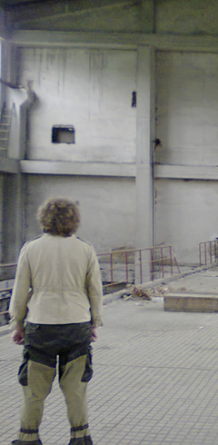






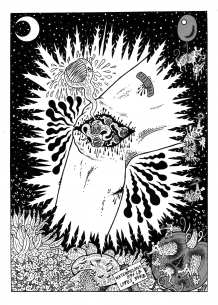




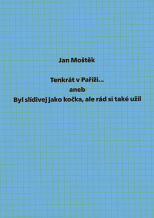
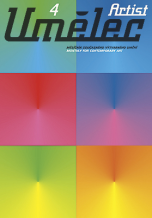
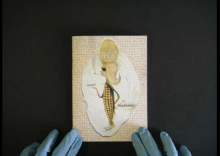
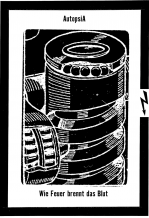


 We Are Rising National Gallery For You! Go to Kyjov by Krásná Lípa no.37.
We Are Rising National Gallery For You! Go to Kyjov by Krásná Lípa no.37.
Comentarios
Actualmente no hay comentariosAgregar nuevo comentario